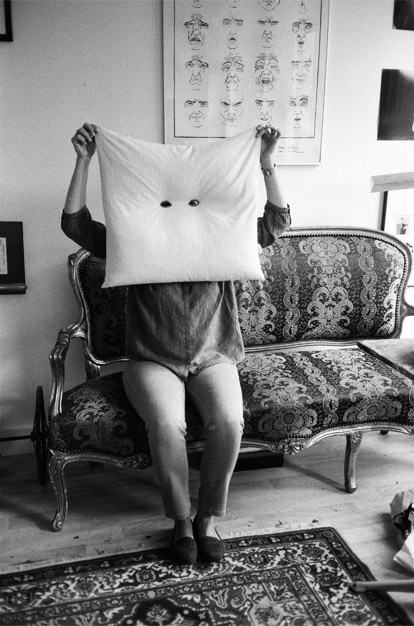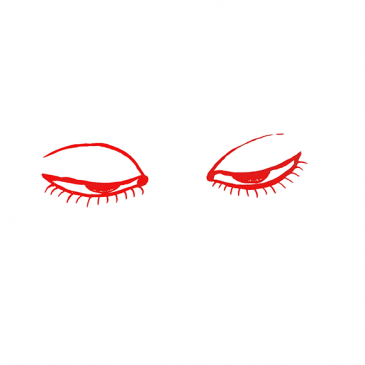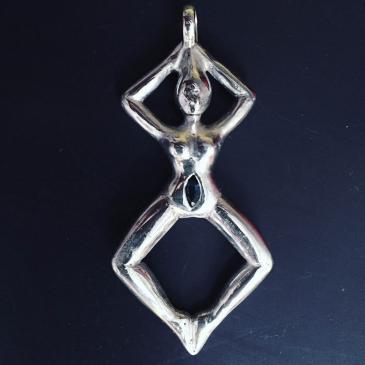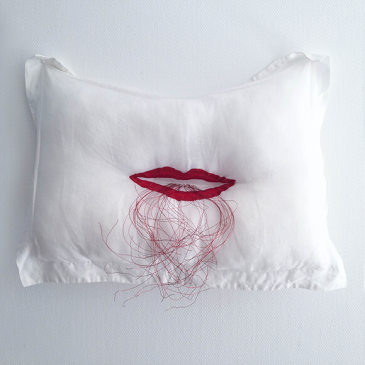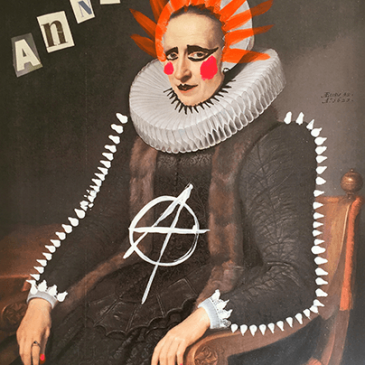Philippa’s father, a renowned archeologist, once said that if he could change one sentence in the history books, his life’s purpose would be fulfilled. The ambition and modesty in this wish also apply to his (only) daughter Philippa van Loon. An artist in her gut and soul.
I met Philippa in 1996, then a young woman, who had not long ago completed her BA in sculpture at Chelsea School of Art in London. It was a time in which a group of flamboyant conceptual artists, later known as the Young British Artists, shook the foundations of the established art world. In those days no one knew what the future would have in store. The mentality and thought process of the YBA’s fit perfectly with the Punk movement of the eighties in which the young generation definitively broke, out of social dissatisfaction, from the traditional ‘class conscious’ and economically weakened England. Philippa felt completely at home in this environment. Whether it was assisting a friend who was helping paint one of Damien Hirst’s early spot paintings, or how she used to hang out with artist friends, Gavin Turk, Martin Creed, and Jeremy Deller, exchanging works but mostly just having fun.
However, the ties with Amsterdam and her heritage appeared stronger than she expected. And in 1994, enriched by her London experience, Philippa decided to dedicate herself to the continuation of the ‘family’ museum. Now more than 20 years later she spends her life between the apartment on top of the museum, (where she grew up), her studio in Amsterdam, and a house in the Provence. A dynamic life where art is the leading thread. Amongst the 18th century family portraits, photographs by contemporary artist Rineke Dijkstra or painting by Katinka Lampe, Philippa finds herself always surrounded by art and artists.
Few are aware of the fact that, in parallel to her active life with family and overseeing the museum, Philippa has always been working as an artist. Many sketchbooks and drawings are proof to this, as well as her recent works in the ”Turkish Tulips” show. Curated by Gavin Turk, this exhibition includes the artists; Cornelia Parker, Helen Chadwick and Rob & Nick Carter.
I visited her in her studio, where she works daily, combining childhood (often lonely) memories and later personal lifestyle choices in a unique way. Dolls her father brought back from his travels can be recognized in the bronze Barbie ‘goddesses’, who on the one hand refer to icons from antiquity and on the other freed from physical and mental limits. (For example ‘goddess with legs widely spread’.) These are Philippa’s personalized Barbie’s or Voodoo dolls…. Or the reworking of the classical family portraits of her father, Aunty Antoinette and ancestor Hans, transformed into authentic Punk heroes complete with Mohican, safety pins and black nail polish… or the abstract spiral drawings that Philippa draws as a daily Zen exercise; half circles, whole circles, endless partially overlapping circles… Or the gilt ‘wilted’ tulip complete with roots and bulb that she made especially for the “Turkish Tulips”, admired on a lacquered table in the museum’s ‘Drakensteinkamer… Or the ‘Tulip Coffin', a glass coffin in which dried tulips are sandwiched in the sides. A reference to the fragility of life and a touching homage to close ones who have passed on, and the many past inhabitants of the museum.
Philippa is an artist in the true sense. Blessed or cursed, as the last and only descendant of a famous Dutch dynasty is not the point. Philippa answers relevant questions with her own art in which she brings tradition and freedom, past and present all together to form her own visual language. The way she immortalizes a tulip by gilding it, so too she eternalizes her life with her art. Through this she makes a worthy and lasting contribution to the family history and to the history of art.
Just as her father wished to do this with just one sentence, Philippa strives to do through her art.
The circle is complete.
God Save the Queen!
God Save Philippa!
Read less
